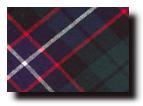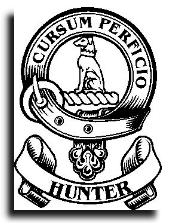
 Hunting was important in the Middle Ages so the occupational name Hunter arose across most of Scotland, sometimes in a Latinised version of "Venator". Three Hunter landowners from Paisley were signatories to the infamous "Ragman Roll" in 1296 when King Edward I of England held a parliament at Berwick to which he summoned all Scottish landholders to swear allegiance to him.
Hunting was important in the Middle Ages so the occupational name Hunter arose across most of Scotland, sometimes in a Latinised version of "Venator". Three Hunter landowners from Paisley were signatories to the infamous "Ragman Roll" in 1296 when King Edward I of England held a parliament at Berwick to which he summoned all Scottish landholders to swear allegiance to him.
But a major strand of the name was a Norman family of Hunters who settled in Ayrshire in the 13th century, giving their name to the village of Hunter's Toune - now Hunterston. A parchment, signed by King Robert II in 1374 confirming ownership to William Hunter (the 10th owner), still survives there. The rent was a silver penny and to this day the Laird of Hunterston keeps silver pennies from the reign of Robert II - just in case the monarch drops by looking for the rent!
Yone Venatore witnessed a charter in Beauly in 1231 and Adam Hunter was granted a hereditary office in the lands of Newbattle Abbey in 1259. In 1327 Maurice Hunter was provost of Stirling and Aymon Hunter was burgess of Cullen on the Moray Firth.
In the 15th century the Ayrshire family were hereditary keepers of the royal forests in Arran and Little Cumbrae in the Clyde estuary. John Hunter, the 14th Laird, died at the Battle of Flodden in 1523 and John's grandson was killed at the Battle of Pinkie in 1547. The 20th Laird graduated from Glasgow University in 1643. Robert Hunter, a grandson of the 20th Laird became Governor of Virginia and then New York. Hunterston House, an elegant manor, was built in the late 18th century. The present chief of the family, recognised by the Lord Lyon, is the 30th. At one stage the Hunters of Polmood challenged the precedence of the Hunterston line but this was rejected as they had never been styled "of that ilk."
Brothers William and John Hunter were born in East Kilbride in the 18th century. William became an eminent anatomist, improving the teaching of the subject and advancing the science of gynaecology. William left a medical and scholarly collection to Glasgow University and they are to be found in the Hunterian Museum. John was a prominent surgeon in London and in the army in Portugal. He started a collection of anatomical specimens and by his death he had 13,000 of these.
The Hunter clan motto is "Cursum perficio" which means "I accomplish the hunt".
Hunter was the 37th most frequent surname at the General Register Office in 1995.



